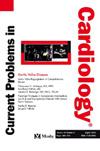Identifying low-risk in patients with worsening heart failure with short hospital stay: A comparison of risk scores in predicting 30-day risk events
IF 3
3区 医学
Q2 CARDIAC & CARDIOVASCULAR SYSTEMS
引用次数: 0
Abstract
Introduction
Heart failure (HF) is a leading cause of hospitalization worldwide, with high mortality rates and significant economic burden. To address the issue outpatient strategies (day-care diuretics) to avoid unplanned ED visits and reduce HF hospitalizations. However, the identification of low risk patients worsening heart failure (WHF) who could benefit from outpatient treatment remains poorly documented.
Objective
We aimed to evaluate the accuracy of multiple scores in predicting the risk of 30-day events in patients WHF who underwent brief hospitalizations.
Methods
We conducted a retrospective analysis of a prospective and consecutive cohort of WHF patients with hospitalizations of less than 72 h at a tertiary care hospital between 2015 and 2020. The risk of 30-day all-cause mortality was evaluated using the OPTIMIZE-HF, GWTG-HF, and ADHERE risk scores. And the secondary endpoint was the combined unplanned visit or readmission for worsening HF or death at 30 days. The risk of events in low-risk populations was analyzed by tertiles within the most predictive model.
Results
Among the 200 included patients (mean age: 75.5 ± 12 years; 62% male), 95.9% had a 30-day follow-up, with an overall mortality rate of 4% and a secondary composite endpoint of 14%. AUC-ROC for the prediction of 30-day all-cause mortality were 0.76 (95% CI 0.59-0.93), 0.66 (95% CI 0.46-0.86), and 0.64 (95% CI 0.44-0.85) for OPTIMIZE-HF, GWTG-HF, and ADHERE, respectively. For the secondary combined event, the AUC-ROC was 0.70 (95% CI 0.59-0.79) for OPTIMIZE-HF, GWTG-HF 0.67 (0.56-0.77) and ADHERE 0.67 (0.56 -0.77). The three scores had good calibration (Hosmer-Lemeshow goodness-of-fit test >0.05). Among the low-risk patients (n = 76, OPTIMIZE-HF score <32), the incidence of mortality and combined events at 30 days was 1.3% and 5.3%, respectively. Kaplan-Meier survival analysis showed that low risk patients had lower risk of the combined event (log rank p < 0.006).
Conclusion
Among WHF patients with short hospital stays, the OPTIMIZE-HF score exhibited superior predictive ability compared to other scores and may serve as a valuable tool for assessing the risk of death or combined events at 30 days. Utilizing the OPTIMIZE-HF risk score could aid in identifying low-risk patients who might benefit from outpatient management of AHF in a day-care diuretic clinic.
在住院时间较短的心力衰竭恶化患者中识别低风险:风险评分在预测 30 天风险事件方面的比较。
心力衰竭(HF)是世界范围内住院治疗的主要原因,具有高死亡率和巨大的经济负担。解决问题门诊策略(日间护理利尿剂),以避免计划外急诊科就诊和减少心衰住院。然而,鉴定可从门诊治疗中获益的低风险心力衰竭患者(WHF)仍然缺乏文献记录。目的:我们旨在评估多重评分在预测短期住院WHF患者30天事件风险方面的准确性。方法:我们对2015年至2020年间在三级医院住院时间少于72小时的WHF患者的前瞻性和连续队列进行了回顾性分析。使用OPTIMIZE-HF、GWTG-HF和粘附风险评分评估30天全因死亡风险。次要终点是合并计划外就诊或心衰恶化再入院或30天死亡。在最具预测性的模型中,对低风险人群的事件风险进行了分析。结果:纳入的200例患者(平均年龄:75.5±12岁;62%男性),95.9%随访30天,总死亡率为4%,次要综合终点为14%。对于OPTIMIZE-HF、GWTG-HF和stick,预测30天全因死亡率的AUC-ROC分别为0.76 (95% CI 0.59-0.93)、0.66 (95% CI 0.46-0.86)和0.64 (95% CI 0.44-0.85)。对于次要联合事件,OPTIMIZE-HF、GWTG-HF和粘附的AUC-ROC分别为0.70 (95% CI 0.59-0.79)、0.67(0.56-0.77)和0.67(0.56-0.77)。三个评分具有良好的校正(Hosmer-Lemeshow拟合优度检验>0.05)。结论:在短住院时间的WHF患者中,与其他评分相比,OPTIMIZE-HF评分具有更好的预测能力,可以作为评估30天死亡或合并事件风险的有价值的工具。利用OPTIMIZE-HF风险评分有助于识别低风险患者,这些患者可能受益于利尿剂日间护理诊所的AHF门诊管理。
本文章由计算机程序翻译,如有差异,请以英文原文为准。
求助全文
约1分钟内获得全文
求助全文
来源期刊

Current Problems in Cardiology
医学-心血管系统
CiteScore
4.80
自引率
2.40%
发文量
392
审稿时长
6 days
期刊介绍:
Under the editorial leadership of noted cardiologist Dr. Hector O. Ventura, Current Problems in Cardiology provides focused, comprehensive coverage of important clinical topics in cardiology. Each monthly issues, addresses a selected clinical problem or condition, including pathophysiology, invasive and noninvasive diagnosis, drug therapy, surgical management, and rehabilitation; or explores the clinical applications of a diagnostic modality or a particular category of drugs. Critical commentary from the distinguished editorial board accompanies each monograph, providing readers with additional insights. An extensive bibliography in each issue saves hours of library research.
 求助内容:
求助内容: 应助结果提醒方式:
应助结果提醒方式:


